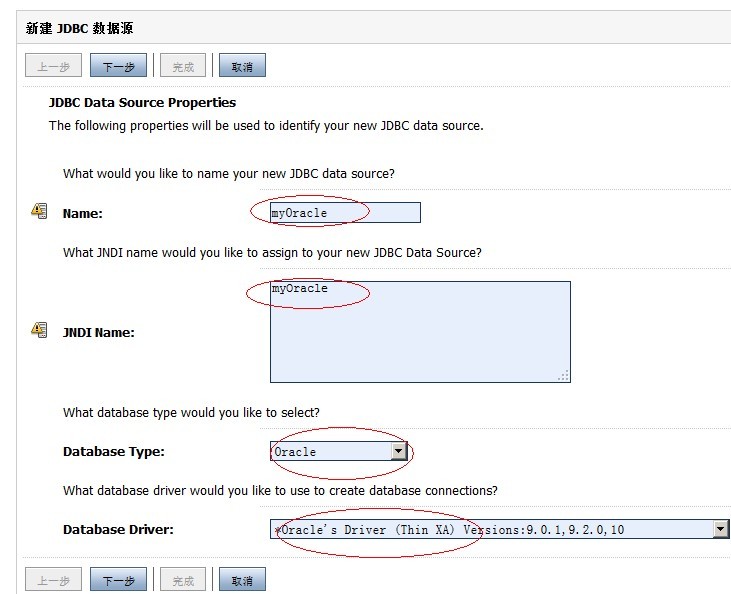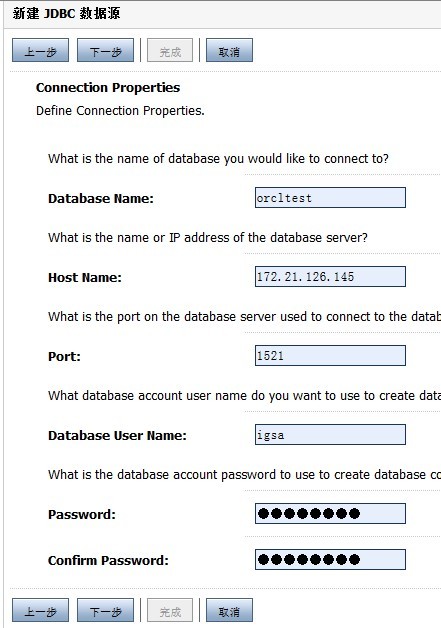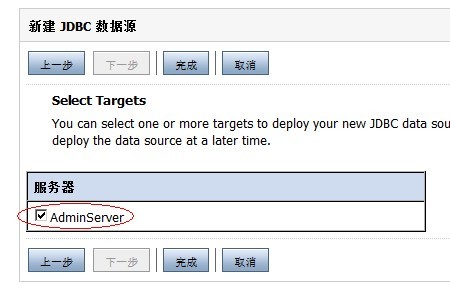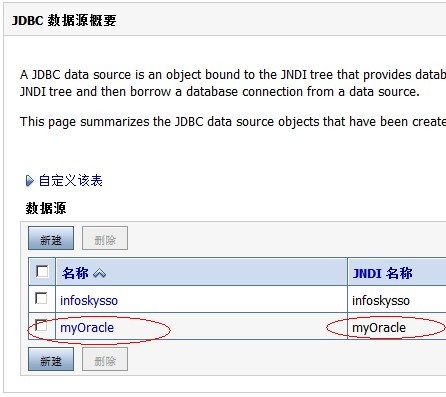JNDI的专业解释,大家自行去网络搜索吧,这里就不啰嗦了。
单纯从使用角度看,可以简称把它看成一个key-value的“哈希资源”容器。给定一个string类型的key,可以把任何类型的value,放入这个容器(通过bind/rebind方法);其它地方需要使用该资源时,根据key就能取出该资源(通过lookup方法)
JNDI使用示例:
1 2 3 4 5 6 7 8 9 10 11 12 13 14 15 16 17 18 19 20 21 22 23 24 25 26 27 28 29 30 31 32 33 34 35 36 37 38 39 40 41 42 43 44 45 46 47 48 49 50 51 52 53 54 55 56 57 58 59 60 61 62 63 64 65 66 67 68 69 70 71 72 73 74 | package jmyang.weblogic; /** * <p>Title:JNDI示例(WebLogic环境) </p> * <p>Description: </p> * <p>Copyright: Copyright (c) 2012</p> * <p>Company:cnblogs </p> * @菩提下的杨过 * @version 1.0 */ import javax.naming.*;import java.util.Hashtable; public class JNDITest { static Context ctx = null; public static void test() { String key = "jmyang"; //先绑定 bind(key, "杨俊明"); //再取出来 String value = (String) lookUp(key); System.out.print(key + "=" + value); } /* *绑定 */ public static void bind(String name, String object) { Hashtable ht = new Hashtable(); ht.put(Context.INITIAL_CONTEXT_FACTORY, "weblogic.jndi.WLInitialContextFactory"); ht.put(Context.PROVIDER_URL, "t3://localhost:7001"); try { ctx = new InitialContext(ht); ctx.rebind(name, object); } catch (NamingException e) { e.printStackTrace(); } finally { try { ctx.close(); } catch (Exception e) { e.printStackTrace(); } } } /* * */ public static Object lookUp(String name) { Hashtable ht = new Hashtable(); ht.put(Context.INITIAL_CONTEXT_FACTORY, "weblogic.jndi.WLInitialContextFactory"); ht.put(Context.PROVIDER_URL, "t3://localhost:7001"); try { ctx = new InitialContext(ht); Object object = ctx.lookup(name); return object; } catch (Exception e) {} finally { try { ctx.close(); } catch (Exception e) { e.printStackTrace(); } } return null; }} |
上述代码执行完以后,也可能通过weblogic控制台,查看jndi树来验证:
JDBC数据源,实际上,也是使用JNDI服务来访问的,下面是JDBC示例代码:(必须先在weblogic中创建数据源)
1 2 3 4 5 6 7 8 9 10 11 12 13 14 15 16 17 18 19 20 21 22 23 24 25 26 27 28 29 30 31 32 33 34 35 36 37 38 39 40 41 42 43 44 45 46 47 48 49 50 51 52 53 54 55 56 57 58 59 60 61 62 63 64 65 66 67 68 69 70 71 72 73 74 75 76 77 78 | package jmyang.weblogic; /** * <p>Title:JDBC示例(WebLogic环境) </p> * <p>Description: </p> * <p>Copyright: Copyright (c) 2012</p> * <p>Company:cnblogs </p> * @菩提下的杨过 * @version 1.0 */import java.sql.*;import javax.naming.*;import javax.sql.*;import java.util.Hashtable; public class JDBCTest { static final String webLogicServer = "t3://localhost:7001"; //weblogic服务器地址 static final String webLogicINDIStr = "weblogic.jndi.WLInitialContextFactory"; public static void test() { Connection myConn = null; DataSource ds = null; Context ctx = null; Hashtable ht = new Hashtable(); ht.put(Context.INITIAL_CONTEXT_FACTORY, webLogicINDIStr); ht.put(Context.PROVIDER_URL, webLogicServer); try { ctx = new InitialContext(ht); ds = (javax.sql.DataSource) ctx.lookup("infoskysso"); //取得名为infoskysso的数据源(注:infoskysso要在weblogic中设置数据源) } catch (NamingException e) { e.printStackTrace(); } Statement myStatement = null; ResultSet myResultSet = null; try { myConn = ds.getConnection();//建立连接 myStatement = myConn.createStatement(); myResultSet = myStatement.executeQuery( "Select DEPTNO From DEPT where rownum<=10"); while (myResultSet.next()) { System.out.println("DEPTNO=" + myResultSet.getInt("DEPTNO")); } myResultSet.close(); } catch (SQLException e) { System.out.println("Error code = " + e.getErrorCode()); System.out.println("Error message = " + e.getMessage()); } finally { //关闭查询 if (myStatement != null) { try { myStatement.close(); } catch (SQLException e) { System.out.println("Error code = " + e.getErrorCode()); System.out.println("Error message = " + e.getMessage()); } } //关闭连接 if (myConn != null) { try { myConn.close(); } catch (SQLException e) { System.out.println("Error code = " + e.getErrorCode()); System.out.println("Error message = " + e.getMessage()); } } } }} |
附: weblogic中创建jdbc数据源的方法
点击查看更多内容
为 TA 点赞
1 评论
共同学习,写下你的评论
作者其他优质文章
正在加载中
感谢您的支持,我会继续努力的~
扫码打赏,你说多少就多少
赞赏金额会直接到老师账户
支付方式
打开微信扫一扫,即可进行扫码打赏哦














父类用private定义变量,子类不会继承呀~~~